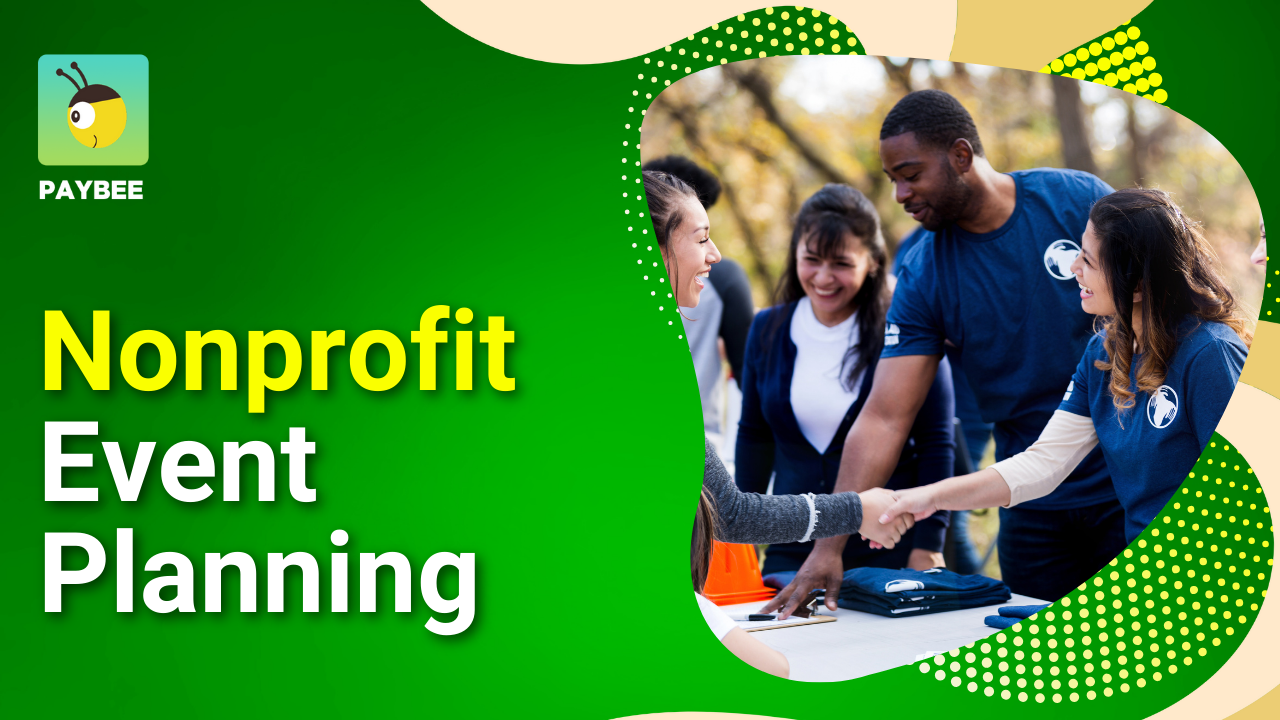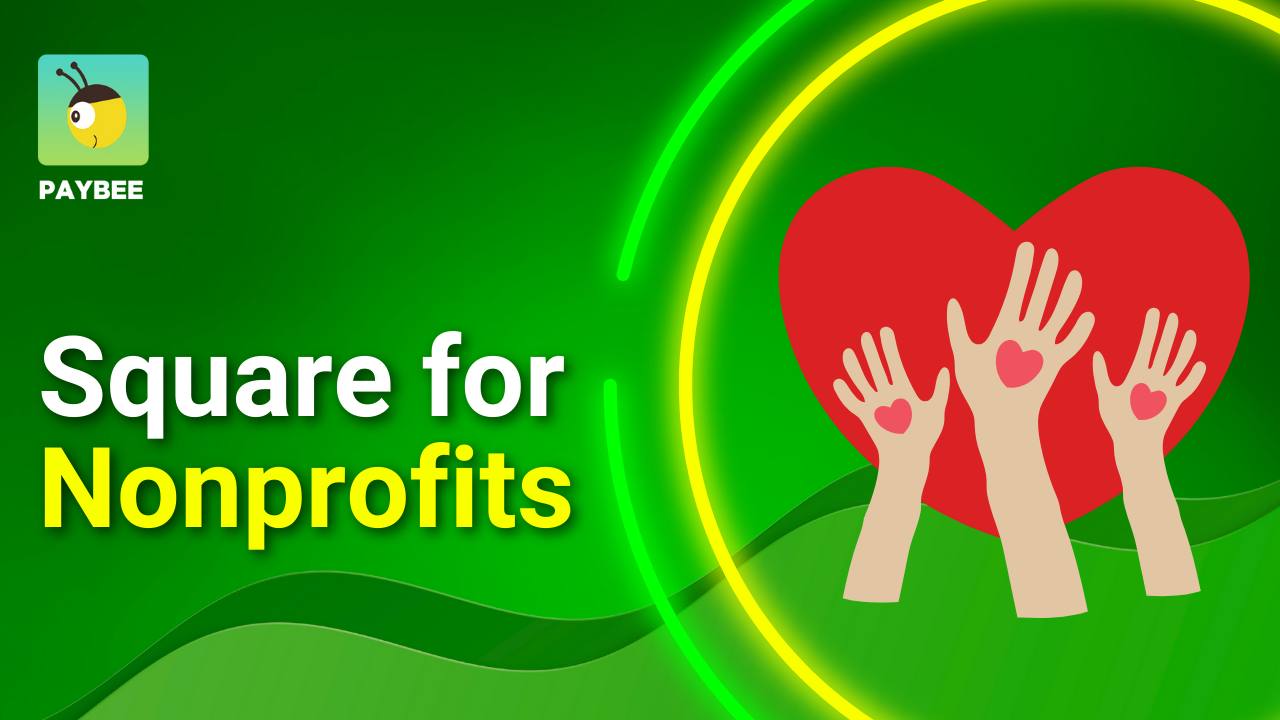
Comprehensive Guide to Nonprofit Event Planning
Comprehensive Guide to Nonprofit Event Planning
Introduction to Nonprofit Event Planning
A well executed and successful nonprofit event is able to meet its financial goal, strengthen donor loyalty and long-term support, as well as establish and solidify community connections. Nonprofit events play a vital role in fundraising by generating revenue through ticket sales and other revenue generating activities as well as through donations and sponsorship. Likewise, these events create the perfect opportunity to generate high donor engagement through showcasing and highlighting the organization’s impact on their target demographic.
Nonprofit event planning is essentially the process of strategically organizing mission-driven gatherings and activities such as dinner galas, auctions, community fairs, benefits concerts, etc, where like-minded individuals can come together to support a cause. The end goal of planning and organizing an event is to raise funds and awareness and build stronger relationships with support. Non Profit event planning is more than just logistics. Non Profit events are a powerful tool organizations use to promote their mission, cultivate donorship and supporters and long-term sustainability.
Unlike for profit events however, non profit events have to balance a limited budget with the goal of maximizing and creating meaningful impact. A well planned event can significantly boost revenue and expand community impact
Events are indeed a cornerstone of nonprofit fundraising as they provide a face-to-face platform to engage donors through emotional storytelling, compelling presentations and-or interactive displays. These events serve to humanize the mission and deepen donor understanding and connection. As a result, these nonprofit events lead to stronger donor loyalty and commitment as well as increased giving and donations.
Moreover, nonprofit events have the potential for high return on investments. In one example a small local environmental nonprofit hosted an eco-themed garden dinner that aligned with its mission core and targeted ecoconscious donors. The nonprofit managed to raise and exceed their goal by 300%, gaining half a dozen corporate sponsors and seriously boosting its recurring donorship and volunteer sign-ups.
Beyond logistics, with clear goals, creative vision and strategic execution a non profit event can turn a single night into a lifetime of commitment and support while elevating an organization’s profile and strengthening its ties with the community it serves.
Explore nonprofits basic here.
What Is Nonprofit Event Planning?
Nonprofit events are more than just fundraising. They are unique opportunities for a nonprofit organization to showcase their impact and effectiveness through compelling story telling while fostering deeper connection with supporters and guests. They are an opportunity for organizations to rally the local community and business leaders behind a mutually shared cause or purpose. Through careful and thoughtful planning of events that align with their mission purpose, nonprofits events can serve to strengthen relationships and further advance their impact.
In a nutshell, nonprofit events are planned gatherings or activities by a nonprofit organization to further its mission, build awareness, engage supporters and ultimately raise funds. You can find out more about event types here.
What are common nonprofit event types? Nonprofit events include galas, silent auctions, fun runs, and workshops, each designed to raise funds or awareness.
Galas: these are formal fundraising events. Typically in the evening and in a dinner and ballroom setting that includes live music and entertainment and auctions.
Silent Auctions: is an event where guests bid on items or services that have been donated by a sponsor in order to raise additional funds for a fundraiser. Usually, these are included in Galas but also in Golf Tournament Fundraisers.
Fun Runs and Walks: these are outdoor active events that encourage broad participation and high public visibility. Raising funds through entry fees and often peer-to-peer fundraising they encourage community and family participation.
Workshops and Seminars: typically are a form of educational event that is meant to serve as a platform to inform and communicate to the attendees and local community of an organization's expertise and impact of its efforts.
It is important to mention that a huge part of a nonprofit's success is to align the event with the nonprofit’s mission. The importance of this cannot be overstated. The event should always reflect the nonprofit's mission and values as well as tie them into an organization's goals. This will help foster deeper connections with the attendees and help in engaging donors and sponsors.
Nonprofit events can also be effective at engaging diverse audiences. Different events attract different demographics For example, Galas would attract donors and impact investors while Fun Runs or Walks will attract families and younger groups.Volunteers can of course be involved in all events and form a key support group for any non profit event. Volunteers are usually involved in the planning, promotion, organizing, logistics, decoration and outreach and more. In every case, volunteers are key to helping a nonprofit event become a success.
Benefits of Nonprofit Event Planning
Nonprofit events carry many benefits besides simply fundraising. When an event is well planned and well organized it has the power to strengthen donor loyalty, enhance brand awareness among the community and effectively engage a diverse audience while fostering new relationships as well as strengthening current ones.
Here are top 5 benefits of nonprofit events.
Boost Funding
Events are a key tool for raising funds for a nonprofit organization. Events often provide multiple streams of revenue to boost funding and secure revenue. In addition to traditional donations, opportunities through ticket sales and entry fees, silent or live auctions, raffles and even acquiring sponsorship from local businesses or corporations all serve to increase fundraising. Oftentimes, these events will raise more funds than a campaign.
Strengthen Donor Loyalty
Events can generate stronger donor loyalty and supporter relationships by creating memorable experiences that align with the organization's mission in order to deepen emotional connection between the donors and attendees and the cause. As a result of this deeper emotional connection loyalty and long-term engagement is secured.
Enhance Brand Awareness
Events help nonprofits showcase their efforts,their impact and their “brand”. Nonprofit events help organizations gain much social media and media attention, especially at the local level and attract new audiences and potentially new donors and supporters. Events help raise public visibility and not only elevate but reinforce the nonprofit's mission and goals.
Engage a Diverse Audience
Because there are several event types such as galas, fun walks, auctions, workshops, etc, organizations are able to target and reach various different audiences and demographics. Anywhere from business entrepreneurs, to youths and to entire families, can be engaged with the appropriate event type.
Galas offer many benefits. For example, they usually attract high-level donors and corporate sponsors. While family friendly events help gain new supporters and enhance visibility.
Fostering Partnerships
Finally, nonprofits use events as a platform for collaboration. Events open doors to partnerships with corporate sponsors and local business leaders, media or marketing entities and even with other nonprofit organizations. Events help build credibility, extend reach and amplify impact.
Strategies for Effective Nonprofit Event Planning
One thing is clear, effective nonprofit events require strategic planning and clear goals, as well as, effective resource management and donor engagement. Any well executed event will be successful not only in hitting their fundraising goals but also as noted, in strengthening and deepening donor loyalty and commitment, in enhancing an organization's standing and credibility and in building future partnerships. For an organization to achieve these goals it is important to follow a systematic approach and establish a guideline of actionable steps of key strategies for producing effective nonprofits events.
How do you plan a nonprofit event? Set SMART goals, create a budget, secure sponsors, and promote via digital channels like social media.
By setting SMART goals, budgeting responsibly, utilizing digital tools and securing and building sponsor partnership nonprofits can create a meaningful event that generates high impact and advances the organization’s mission.
Let's look at these aforementioned actionable steps one by one:
1.Set SMART Goals.
SMART goals are a framework for setting effective objectives to meet. SMART goals help provide direction and allow for accurate evaluation. The acronym stands for Specific, Measurable, Achievable, Relevant, and Time-bound. Using this method helps to ensure goals are well-defined, trackable, realistic, and focused, increasing the likelihood of success.
Before planning the details of the event it is best and ideal to define your objectives using the SMART framework.
Specific. An organization must define concisely what they want to achieve, what are their goals. For example: raise $100,000 or reach 100 attendees.
Measurable. It is important to track progress and track accurately. Choose the indicators based on your goals, so that if your goal is to reach $100,000, you should be tracking the dollar amount being raised.
Achievable. Equally important, it is key to set realistic goals based on past results and considering resources.
Relevant. Always make sure your goals are relevant to your organization’s mission and those of its supporters for deeper connection
Time-Bound. Establishing a clear deadline for your goals is as important as ensuring the deadline is met.
2.Create a detailed budget.
Having a well-planned and balanced budget is a key element of financial sustainability and serves to ensure minimizing overspending and maximizing return on investment. Learn more about creating effective budgets for nonprofits events.
To do this, it is key to include and estimate all costs like staffing, marketing, permits, catering, etc. Likewise, laying out the different potential streams of revenue like ticket sales or auctions, in order to properly estimate expected revenue. Always plan to leave a buffer for unforeseen expenses of at least 10% and finally, it is important to track spending in real time through the use of budgeting tools.
3. Develop a Planning Timeline
Creating a chronological calendar of events is key to increase management efficiency and ensure objectives are met in a timely manner. Breaking down the event planning into phases, each phase set with target dates is the best way to ensure success and readiness. In addition, management software like Trello can help the organization’s planners stay organized and provide accountability.
4.Leverage digital platforms
In today’s world it is key to leverage digital tools such as platforms to simplify ticket sales, guest management, boost outreach, promotion and marketing campaign
PayBee is a platform that offers solutions for ticket sales, RSVP, and guest list management, particularly for fundraising events. It allows for the creation of ticket campaigns as well as customizable ticket options, management of guest information, and connection of tickets to in-person or virtual events.
Social Media platforms like Facebook Event, Instagram and Tik Tok are extremely useful for event promotion, build anticipation and create a buzz. With social media, nonprofits can easily and cheaply extend their reach to greater and new audiences.
Email Marketing tech like Mailchimp or Constant Contact can help personalize and segment invites as well as reminders to a large group.
5.Secure corporate sponsors by offering branding opportunities.
Acquiring sponsorship can really help cut costs and ensure that the maximum amount of net revenue is collected. Corporate sponsors in particular can help offset upfront costs. It is key that nonprofit event planners create sponsorship tiers like Gold, Silver and Bronze to incite strong sponsorship.Tiers should have donations ranges along with increasing benefits for brand and logo visibility and mentions.
Nonprofit Event Planning Trends in 2025
Blending traditional engagement strategies with innovative and tech driven digital tools it is clear that nonprofit event planning continues to evolve. What are 2025 nonprofit event trends? Hybrid events and digital platforms like Paybee boost engagement and revenue in 2025. Some of the top trends include hybrid events, digital platforms, voice optimized outreach and AI driven personalization.
Hybrid Events
Perhaps the biggest trend is the implementation of hybrid events. Hybrid events essentially combine in-person and virtual experiences. This format offers flexibility and allows for guests and attendees to choose how they engage. At the same time hybrid events dramatically increases accessibility to the event and reach
Digital Bidding Platforms
Integrating digital bidding platforms in silent auctions and fundraising continues to increase in popularity. Digital bidding platforms have demonstrated great efficiency not only in increasing participation but also, by extension, increasing revenue. Various platforms now allow participants to place bids in real-time from phones or tablets.
Voice Search Optimization
Another important development gaining ground in nonprofit event planning is voice search optimization. Specifically, this is used for the marketing phase of the event. The growing use of smart phones and smart devices are prompting nonprofit event planners to tailor content for voice assistance like Aexa and Google Assistant. Things like event reminders, registration and even FAQs are now frequently being made more readily available via voice search. Preparing content specifically for this feature has now become critical for online visibility and reach
AI Driven Personalization
Donor engagement is increasingly being driven by AI. Artificial Intelligence for nonprofits is being used to analyze supporters and donor’s past behaviour so that everything becomes customizable. From invitations, to suggested donation amounts and recommending event sessions showing past and likely interest. The end result is that AI personalization is driving higher RSVP rates and donor retention.
Leveraging Social Media
In 2025 short form video and live streaming are dominating social media platforms like Instagram Reels and Tik Tok, as well as Youtube Shorts. These video models are used to create buzz and build hype and increase shares and reach. While live streaming segments of the event does plenty to help the event planners to extend their reach beyond local audiences.
It is important for nonprofits and fundraising organizers to be aware of these trends and leverage them to drive stronger engagement and boost revenue to become more efficient, inclusive and generate greater impact.
Challenges in Nonprofit Event Planning
Any successful nonprofit event planning requires well thought out and careful management of any challenges that may present itself whether in logistics, financial or donor and supporter engagement areas. Planning and organizing events like galas, fundraisers, auctions, benefit concerts can present unique challenges to organizations. Virtual fundraising events present specific challenges for example and require particular strategies to overcome these challenges.
What challenges arise in nonprofit event planning? Budget constraints and low attendance can be addressed with sponsorship and targeted promotion.
These challenges, if not effectively addressed, can indeed hinder the success of the event. Therefore, overcoming these require creativity, preparedness and strategic planning that balances impact and with limited resources and aligns the mission with available resources.
In no particular order here a few of the most common challenges to expect during a nonprofit event planning
1. Budget Constraints
Perhaps one of the more significant challenges a nonprofit will have: limited financial resources. Because non-profits lack access to large budgets, it is often the case that they will have limited capacity to hire professional vendors, or secure high-profile venues or invest strongly in marketing and promotion. Balancing cost effectiveness while maintaining quality can be a struggle. One way to overcome this is by securing corporate sponsors to absorb most of the upfront costs.
2. Donor Fatigue
Donor fatigue is another common challenge of fundraising event planning. Over soliciting donors can make some donors disengage or stop altogether if they feel overwhelmed by constant fundraising requests. Similarly, attending too many events or even receiving too many invitations can also lead to donor fatigue and less attendance and participation. Personalizing outreach can help overcome this particular challenge.
3.Low Attendance
Low turnout directly impacts fundraising efforts and reduces revenue potential from ticket sales, donations, and other active streams such as raffles or auctions. However, in addition to lower revenues, low attendance can also hurt reputation and therefore, long-term support. Usually, low attendance is a sign of poor marketing, conflict of scheduling or simply a programming that is left wanting. Social media platforms are an effective and cost efficient way to overcome this challenge and build anticipation for the event while creating a buzz.
4. Volunteer Management
Because nonprofits rely heavily on volunteers to staff events and lower costs, volunteership can also produce challenges. Coordination, training and reliability are all areas where volunteer staffing can present itself as a challenge. This is especially true if volunteers lack the skills or commitment required. Overcoming this challenge will require for the organization to clearly define roles, communicate instructions clearly and assign a volunteer manager or head of volunteer to censure smooth participation on behalf of the volunteers.
5. Measuring Event Success
Accuratley tracking a nonprofit event’s success can be a challenge. Whether it is a healthy ROI, gauging impact or new donor acquisition, establishing KPIs can help evaluate outcomes and success.
Nonprofit Event Planning Success Stories
When looking at nonprofit event planning success stories one thing is clear: creativity, mission drive story telling and data driven follow up are key elements of what constitutes an effective and successful nonprofit event planning. A successful and well executed event can indeed render powerful and long lasting results. In all cases, and across all causes and niches, nonprofit organizations are certainly leveraging innovative strategies in order to maximize impact, boost fundraising and enhance donor engagement.
One success story worth mentioning is the 2024 Paws & Hearts hybrid gala event. In a post pandemic world, new challenges arose and the organization implemented a hybrid format. During the event, they successfully combined in-person dinner galas with live streamed auctions, leveraging technology. Thanks to strong efforts to promote the event through digital marketing social platforms and a heart warming and emotional video campaign of rescued pets featuring before and after stories, they managed to raise over 50% more than their original goal. A total of $30,000 was raised, leading to a total success.
In addition, the organization key tactics included:
- Bundling event themes with donor packages
- Acquiring local business sponsors
- Personalized follow-ups
-Behind the scenes video formats
Another success story worth mentioning is when a non-profit focused on youth literacy hosted a Read-a-Thon Festival. In this case, they implemented a gamified event app where youth participants got to track their reading time, earned badges and acquired donations from sponsors. The event was successful and drew over 1,000 participants, as well as tripling volunteer sign up and several new corporate sponsors versus previous years.
In these cases and more, several effective strategies stand out and begin to form a pattern.
1. Digital promotion is crucial for reaching more and new audiences, as well as, boosting engagement and participation.
2.Thematic bundling such as event swag, pat care kits and reading bundles help align theme and decor to donor impact and increase participation rates/
3.Strong and early engagement with corporate sponsors are key to boosting revenue and enhancing visibility.
4.Defining clear and effective tracking of measurable goals like donor retention rates, funds per attendee and new donor acquisition allow nonprofit organizations to gauge their success and make incremental adjustments for future events.
Conclusion: Mastering Nonprofit Event Planning
To recap, recall that nonprofit events are powerful tools organizations can leverage to their benefit. Indeed, a well planned,strategically thought out and properly executed nonprofit event is more than just a fundraiser. It is a trigger and catalyst for generating long-lasting impact, forging long term relationships and promoting higher donor and supporter engagement.
Effective planning requires time. It also requires balancing creativity with strategy in order to achieve measurable results.You can start today by setting your SMART goals, defining your detailed budget, and exploring innovative tech tools to leverage, like Paybee’s platform, in addition to leveraging proven trends, engaging sponsors and donors early on and the capacity to overcome challenges and aggressive and wide promotion of the event on social media platforms as well email campaigns. These actionable steps will serve as a guide.
In essence, nonprofits can master event planning by setting clear goals, using digital tools, and engaging donors effectively.
It is important to keep in mind the benefits of event planning for fundraising. Events are a key tool for raising funds for a nonprofit organization providing multiple streams of revenue to boost funding and secure revenue. Events are effective at strengthening donor loyalty and supporter relationships by creating memorable experiences that align with the organization's mission. They also enhance brand awareness by helping nonprofit events help organizations gain much social media and media attention. Additionally, events can engage diverse audiences and demographics through galas, fun walks, auctions and workshops. Finally events help foster partnerships and help build credibility, extend reach and amplify an organization’s impact.
If you are thinking of planning a nonprofit event imagine a room of supporters all coming together to support your organization for a mutually shared cause. You see a room filled with engaged donors, volunteers, and beneficiaries, all committed and inspired by your organization to take action. Having clear goals with creative strategies to achieve them and a strong promotion will aid your organization in raising much needed funds and building lasting relationships. Literally, watch as your efforts and endeavors turn into a powerful moment that drives growth, awareness and real change and impact for the community.
Start planning for your nonprofit’s fundraising event now and discover more fundraising tips HERE.
FAQs on Nonprofit Event Planning
How can nonprofits promote their events effectively?
There are several ways nonprofits can promote their fundraisers effectively. A combination of strategic planning, leveraging digital tools and driving community engagement offers good tools to do so. Organizations need to use social media and email marketing for aggressive promotion. Engaging local media and press is also helpful to get the word out and build buzz. Forging strong partnerships with local businesses and enticing sponsors through sponsorship tiered benefit packages. Finally, it is key to highlight the impact fundraising will have on the targeted community or beneficiaries.
What are common mistakes in nonprofit event planning?
Missteps in organizing fundraising events can have short term detrimental impact on the organization fundraising goals but also long-term as well in terms of credibility. Here are some common mistakes to avoid: lack of clear goals, underestimating budgetary needs, poor or weak promotional campaign planning, failing to consider donor experience (donor fatigue), not enough volunteer recruitment or not properly training volunteers, choosing the wrong venue and failing to follow up with attendees, donors and sponsors post-event.
How do hybrid events benefit nonprofit fundraising?
Hybrid events have become key to successful fundraising events. Hybrid events are effective at expanding reach and getting to a much wider audience effectively lowering physical barriers to participation. They also can dramatically increase revenue streams, as well as generate stronger donor engagement. Hybrid events also offer cost efficiency by reducing the need for large venues. Additionally, hybrid events, that is, digital participation allow for better and more clear data collection that allows organizers to analyze and refine future campaigns in order to target donors more effectively.
How do you measure the success of a nonprofit event?
To measure how successful your nonprofit event was, it is vital to look at not just financial metrics but also mission-driven impact. Here are several key ways to measure your event: financial metric (funds raised vs goal), attendance and engagement, mission impact, digital and hybrid metrics, post-event qualitative feedback, as well as, long-term outcomes like retention rates and partnership growth.
What are the latest trends in nonprofit event planning?
Here are some of the latest trends for nonprofit event planning in 2025.
Leveraging AI and data driven personalization, implementing hybrid formats and inclusivity access and DEI integration. In addition, other trends include focusing on sustainability and ethical practices,implementing immersive experiences and using social media "influencers" to reach younger audiences.
Start Fundraising






